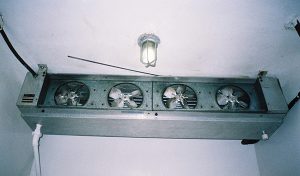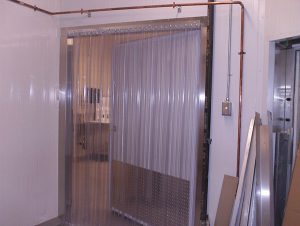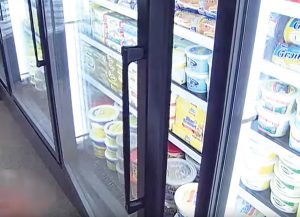
Tips for walk-in box maintenance
March 2, 2019 | By Dave Demma
Walk-in boxes are an essential component of commercial applications such as convenience stores, grocery stores and restaurants. Without them it would be difficult for these businesses to maintain a steady supply of products that require refrigeration, either to maintain their freshness, or to be sold/served at a desirable temperature for consumption.
As such, it behooves these commercial establishments to employ the services of reputable contractors to ensure their equipment is well maintained, which will minimize any interruption in providing those refrigerated products to their customers.
It should go without saying that a professional installation with attention to cleanliness and detail will go a long way in ensuring the equipment operates trouble free, at peak efficiency while delivering its rated capacity. But it is imperative to provide regular maintenance so that the equipment can remain operating at peak efficiency.
Let’s review some tips for maintaining walk-in boxes, and the equipment which provides the refrigeration capacity to deliver the desired temperature the product requires.
Condenser
High compressor compression ratios, and high discharge temperatures lead to reduced compressor capacity, and shortened compressor life. Studies have shown that a relatively minor amount of dirt on a condenser surface will lead to drastic reduction in heat transfer efficiency. For example, a mere 0.042 inch film of dirt on a condenser surface will lead to a 21 per cent loss in heat transfer efficiency. A lack of condenser maintenance will not only limit the ability of the equipment to maintain the desired walk-in box temperature, but this will also lead to a very short compressor life.
Evaporator
Evaporators are subject to the same loss in heat transfer efficiency if their surface becomes obstructed by dirt. Again, the loss on heat transfer efficiency will result in an inability to maintain the desired walk-in box temperature.
In addition, this may lead to a premature compressor failure as well. Liquid refrigerant enters the evaporator, at a temperature that is typically in the range of 10F below the desired walk-in box temperature. The evaporator fans force the air inside the walk-in box through the evaporator fin-tube structure, facilitating the transfer of heat from the air to the cooler refrigerant. The result of this heat transfer process is the liquid refrigerant changing state into a vapor. If the evaporator is dirty enough, there is the real potential that some portion of liquid refrigerant doesn’t undergo a change of state into vapor, allowing liquid to enter the compressor. It is critical that all of the liquid refrigerant change state into a vapor prior to the outlet of the evaporator, as compressors are not designed to compress liquid refrigerant. Liquid refrigerant entering a compressor will result in loss of lubrication, and potentially causing broken valves, pistons, rods, etc. In a word: devastating.
Similarly, a frosted/iced evaporator will yield the same result. It is important to set the quantity and duration of defrost cycles according to the manufacturer’s specifications. In addition, there are instances where the defrost time clock is set correctly, for the quantity and duration of defrost cycles.
Yet, the defrost clock pin could be old, with enough of the pin tip worn away to where it never initiates the defrost cycle.
When instances of frosted/iced evaporators occur, it is important to check the quantity and duration of defrost cycles, make sure the defrost timer is operating correctly, ensure that the pins are not worn.
In addition, check to see of the evaporator drain is clear, and in freezer applications verify that the drain heat tape is keeping the drain warm to prevent it from freezing. A plugged drain (either from dirt/debris, or inoperative drain heater) in an application below 32F will cause a buildup of ice in the pan, eventually resulting in a good portion of the evaporator icing up.
It is also important to periodically inspect (1) the evaporator fan motors, and ensure that they are operating correctly, and (2) the fan blades, and make sure they’re clean and functional. Surprisingly, a dirty fan blade will reduce the fan’s efficiency, resulting in reduced air flow through the evaporator. Obviously, a broken fan blade is extremely ineffective. As seen in the photo below, the fan shrouds are missing. For safety reasons, fan shrouds should always be used.
Evaporators do need to breath. If their ability to draw air from the walk-in box space is limited, it can result in a decrease in capacity due to the reduction in air flowing through the evaporator fin-tube structure. It is important to ensure that product hasn’t been stacked/stored in such a way as to cause this.
Walk-in/reach-in doors
Walk-in box equipment is selected based on a complex set of parameters (such as product load, number of lights and fans, how many people are working in the walk-in box, how long the workers will be in the box, and how often the door is opened).
Door openings can be broken into two categories:
- It seems as though there is an ongoing battle with workers who want to leave the walk-in box door open during those times when product is being stocked or rearranged. While this might lead to the temporary comfort of the worker, it places undue load on the equipment, and also results in the product temperature increasing above what it should be. A very easy solution to this is to install plastic strip curtains, to prevent ambient air from entering the box when the door is open.
- It Is not uncommon to venture into a convenience store for a cold beverage and see one or more of the glass doors open. This could be due to either a mis-adjusted or defective tension assembly. The typical recommendation for adjusting door tension is to open it approximately six inches and adjust the door tension until it closes on its own.
In some instances the door might be closed, but the door gasket is worn and ineffective in providing a seal between the refrigerated space and the outside air. This is another item that should be regularly inspected during maintenance checks. If it is determined that the door gasket is ineffective in sealing, it should be replaced. If the gasket defect is not severe, the equipment might still be able to maintain the desired temperature but there will be additional equipment run time to refrigerate the excessive air infiltration from the ineffective gasket.
Most adults own an automobile. Most automobile owners budget money to provide regular maintenance for their vehicle rather than face expensive emergency service. Likewise, business owners who have invested in refrigeration equipment should enlist qualified and competent contractors to perform regular scheduled maintenance of their equipment.
How simple it is to clean condenser and evaporator coils on a regular basis to ensure efficiently operating equipment, which allows products to be stored at the required temperature necessary for fresh and long lasting life. Yet, how utterly devastating and expensive it can be to choose to neglect the proper maintenance of the investment in equipment.
There is an old saying amongst contractors regarding installing the job correctly, and maintaining the equipment: You can either pay me a little now, or you can pay me a whole lot more at a later date. The choice is yours. <>
Dave Demma holds a degree in refrigeration engineering and worked as a journeyman refrigeration technician before moving into the manufacturing sector where he regularly trains contractor and engineering groups. He can be reached at ddemma@uri.com.








